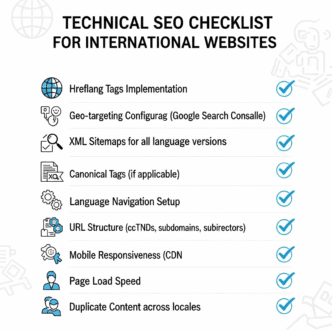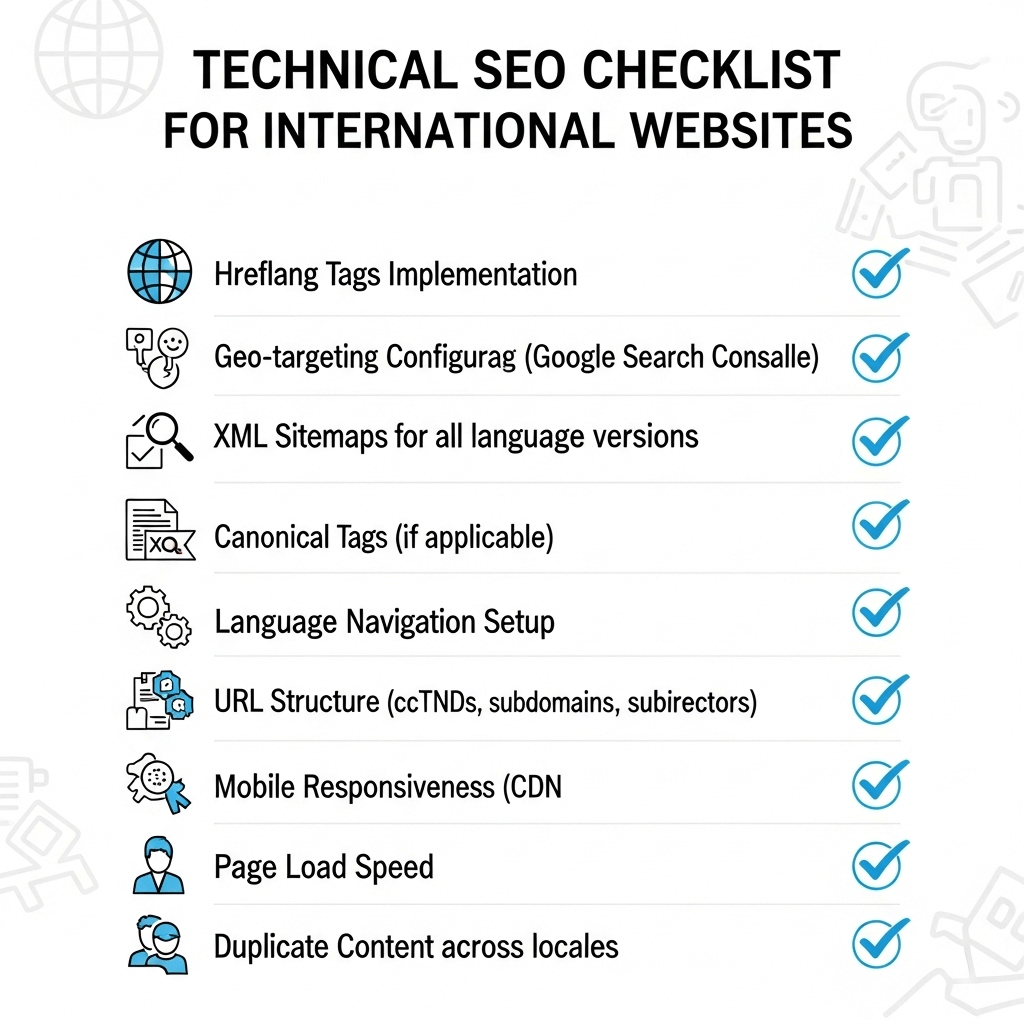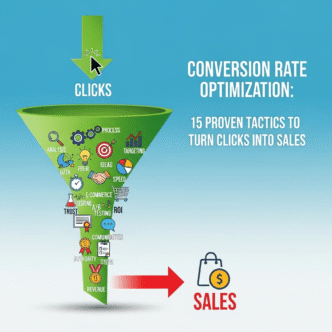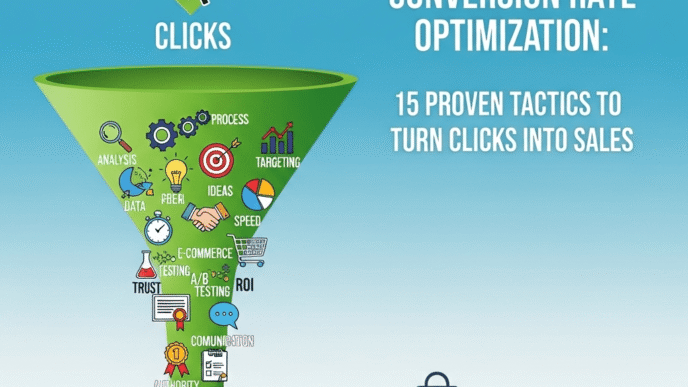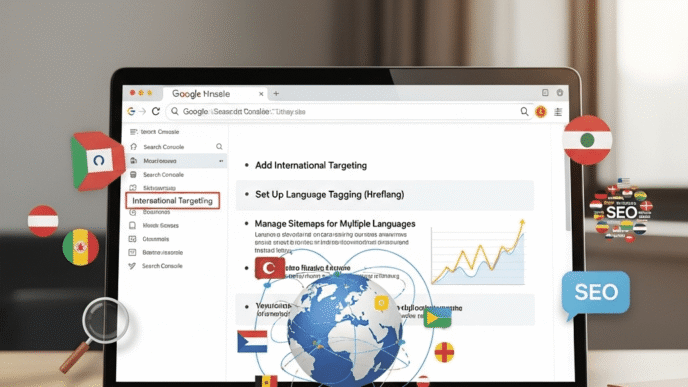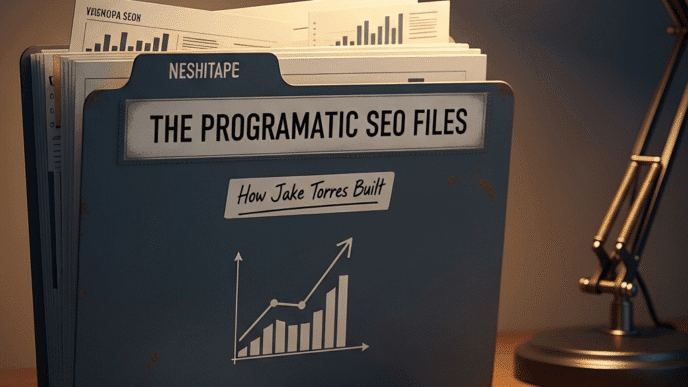Your international website is live. Content is translated, URLs are structured, and you’re ready to conquer global markets. Then you check Google Search Console and see a nightmare: hreflang errors everywhere, crawl issues multiplying, and your French pages ranking in Spain while your Spanish content shows up in Mexico.
Sound familiar?
Here’s the harsh reality: international technical SEO is where most global expansion dreams die. You can have the best content and perfect keyword research, but if your technical foundation is broken, search engines will ignore you—or worse, show the wrong content to the wrong people.
I’ve audited hundreds of international sites, and the technical mistakes I see are shockingly consistent. Companies spend \$50K on translations and content, then completely botch the technical implementation that makes it all work.
The good news? Most technical SEO requirements for international websites follow a clear checklist. Fix these technical elements, and your international SEO performance transforms almost overnight.
This isn’t theoretical fluff. This is your complete international site technical optimization checklist for 2025—battle-tested tactics that actually move the needle.
Let’s make sure your global site actually works.
Table of Contents
ToggleWhat Makes International Technical SEO Different from Standard Technical SEO?
Before diving into the checklist, let’s understand what changes when you go international.
Standard technical SEO focuses on one site, one language, one audience. International technical SEO multiplies complexity exponentially because you’re managing multiple languages, regions, server locations, and user experiences simultaneously.
Key Differences You Need to Understand
1. Hreflang implementation becomes mandatory
Domestic sites don’t need hreflang tags. International sites absolutely do, or search engines will show the wrong language to users.
2. Server location and CDN strategy matter more
Page speed isn’t just about optimization—it’s about serving content from locations close to your users globally.
3. URL structure has SEO implications
Whether you choose ccTLDs, subdomains, or subdirectories affects crawling, indexing, and authority distribution.
4. Duplicate content risks multiply
Similar content across languages can trigger duplicate content filters if not handled correctly with canonicals and hreflang.
5. Geotargeting signals become critical
Search engines need clear signals about which content targets which geographic audience.
6. Crawl budget allocation gets complex
With potentially thousands of pages across multiple languages, efficient crawling becomes crucial.
According to Search Engine Journal, technical errors account for 60% of international SEO failures—far more than content or link-building issues.
Pro Tip: Treat international technical SEO as infrastructure, not a one-time project. Just like you maintain your servers and security, you need ongoing technical SEO maintenance for international sites.
How Should You Structure Your International Site Architecture?
Your global site structure forms the foundation of everything else. Get this wrong, and you’re building on quicksand.
Choosing and Implementing Your URL Structure
We covered the strategic decision in detail elsewhere, but here’s the technical implementation checklist:
For subdirectories (example.com/fr/):
✅ Configure geotargeting in Google Search Console for each subdirectory ✅ Set up language-specific sitemaps for each region ✅ Implement proper internal linking between language versions ✅ Use consistent URL patterns across all markets ✅ Ensure your CMS handles subdirectory routing correctly
For subdomains (fr.example.com):
✅ Configure DNS properly with A records or CNAME records ✅ Set up separate Search Console properties for each subdomain ✅ Implement wildcard SSL certificate or individual certificates ✅ Configure server to handle subdomain routing ✅ Set geotargeting per subdomain in Search Console
For ccTLDs (example.fr):
✅ Register all required country-code domains ✅ Set up separate hosting or proper server configurations ✅ Create separate Search Console properties (geotargeting is automatic) ✅ Implement cross-domain tracking in Analytics ✅ Plan separate link building strategies per domain
Creating a Logical Content Hierarchy
Your site architecture should make sense to both users and search engines across all markets.
Best practices:
Consistent structure across languages:
- If your English site has
/products/shoes/running/, your French site should mirror this:/fr/produits/chaussures/course/ - Don’t randomly change hierarchy between languages—it confuses crawlers
Shallow depth for important pages:
- Keep critical pages within 3 clicks from homepage
- This applies to every language version
- Deep pages get crawled less frequently
Logical categorization:
- Use market research to determine if categories should differ by region
- Some markets may need different product groupings
- Document any structural differences and why they exist
Proper pagination and filtering:
- Implement rel=”next” and rel=”prev” for paginated content
- Use canonical tags on filtered pages appropriately
- Ensure pagination works identically across all language versions
For comprehensive guidance on international site architecture, check this international SEO guide.
What Are the Critical Hreflang Implementation Requirements?
Hreflang tags are non-negotiable for international sites. Yet I see them implemented incorrectly on 70% of sites I audit.
Understanding Hreflang Tag Syntax
The basic structure looks like this:
<link rel="alternate" hreflang="es-mx" href="https://example.com/es-mx/page/" />
Breaking it down:
rel="alternate"– Tells search engines this is an alternative versionhreflang="es-mx"– Language (es) and region (mx) codehref="URL"– Full absolute URL to that version
Your Hreflang Implementation Checklist
✅ Use correct language and country codes
- Language: ISO 639-1 format (es, fr, de, en)
- Country: ISO 3166-1 Alpha 2 format (MX, FR, DE, US)
- Never use made-up codes like “sp” for Spanish
✅ Include self-referential tags
- Every page must include a hreflang tag pointing to itself
- This confirms to Google the page’s language/region
✅ Implement bidirectional linking
- If page A links to page B with hreflang, page B must link back to page A
- Non-reciprocal links get ignored by Google
✅ Add x-default tag
- Points to your default version for unmatched users
- Usually your main market or language selector page
- Example:
<link rel="alternate" hreflang="x-default" href="https://example.com/" />
✅ Use absolute URLs only
- Always include https:// and full domain
- Relative URLs don’t work in hreflang
- Example:
https://example.com/fr/page/not/fr/page/
✅ Choose one implementation method
- HTML head (easiest for small sites)
- HTTP headers (for PDFs and non-HTML files)
- XML sitemap (best for large sites)
- Never mix methods for the same content
✅ Validate your implementation
- Use Google Search Console International Targeting report
- Check for “no return tags” errors
- Use Screaming Frog to audit at scale
- Validate with Aleyda Solis’s hreflang testing tool
Common Hreflang Errors to Avoid
Error 1: Missing return tags
If your English page references Spanish, but Spanish doesn’t reference English back, both get ignored.
Error 2: Incorrect language codes
Using “en-uk” instead of “en-gb” for United Kingdom breaks the implementation completely.
Error 3: Mixing HTTP and HTTPS
Using http://example.com/fr/ for one page and https://example.com/de/ for another creates validation errors.
Error 4: Pointing to non-canonical URLs
Hreflang should only reference canonical versions of pages, never duplicates or variants.
Pro Tip: Set up automated monitoring for hreflang errors. Use Google Search Console API or tools like Screaming Frog scheduled crawls to catch issues within days, not months after they impact traffic.
How Do You Optimize Server Location and CDN Setup?
Page speed international performance depends heavily on where your content is served from.
Understanding Server Location Impact
When your server is in New York but your user is in Tokyo, data travels thousands of miles, adding latency. This affects:
- Page load time (directly impacts rankings)
- User experience (affects conversions)
- Crawl speed (influences how often Google crawls your site)
Server Location Strategies by URL Structure
ccTLD approach:
- Host each country domain on servers in that country
- Germany site on German servers, France on French servers
- Most effective for speed but most expensive
Subdomain approach:
- Can host each subdomain in different locations
- Provides flexibility similar to ccTLDs
- Moderate complexity and cost
Subdirectory approach:
- All content on same server typically
- Use CDN to distribute content globally
- Most cost-effective solution
Implementing CDN Optimization Correctly
A Content Delivery Network (CDN) solves the server location challenge by caching your content on servers worldwide.
Essential CDN configuration checklist:
✅ Choose a CDN with global coverage
- Cloudflare (200+ locations worldwide)
- AWS CloudFront (450+ edge locations)
- Google Cloud CDN (140+ edge locations)
- Fastly (80+ locations)
✅ Configure proper caching rules
- Cache static assets (images, CSS, JS) aggressively
- Set appropriate cache durations per file type
- Don’t cache user-specific content
✅ Set up geolocation routing
- Direct users to nearest edge server
- Configure different content per region if needed
- Test routing from multiple locations
✅ Implement cache purging strategy
- Automate cache purging when content updates
- Set up version control for assets
- Monitor cache hit rates
✅ Configure SSL/TLS properly
- Enable HTTP/2 or HTTP/3 for faster loading
- Use full SSL encryption end-to-end
- Set up automatic certificate renewal
✅ Optimize images for different regions
- Use WebP format with fallbacks
- Implement responsive images
- Consider regional bandwidth differences (mobile-first markets need more compression)
Measuring International Page Speed Performance
Don’t just test from your location—test from your target markets.
Testing tools for international sites:
Google PageSpeed Insights:
- Test from different locations using VPN
- Check both mobile and desktop
- Aim for 90+ scores in all markets
WebPageTest:
- Choose test locations matching your markets
- Run tests from multiple regions
- Compare load times across markets
GTmetrix:
- Test from Vancouver, Hong Kong, London, Sydney, Dallas, São Paulo, Mumbai
- Monitor ongoing performance
- Set up alerts for performance degradation
Target metrics by market:
| Market Type | Target TTFB | Target LCP | Target FID |
|---|---|---|---|
| Tier 1 (US, UK, Western Europe) | <600ms | <2.5s | <100ms |
| Tier 2 (Eastern Europe, Latin America) | <800ms | <3s | <100ms |
| Tier 3 (Parts of Asia, Africa) | <1000ms | <3.5s | <100ms |
Pro Tip: Set up synthetic monitoring from locations in your target markets. Tools like Pingdom or UptimeRobot can monitor performance 24/7 and alert you to regional degradation before it impacts rankings.
What Technical Elements Need Localization?
Technical localization goes beyond translating content—it’s about making your site technically native to each market.
HTML Lang Attribute Configuration
Every page needs the correct HTML lang attribute:
<html lang="fr-FR">
This tells browsers and assistive technologies the page language for accessibility and proper rendering.
Checklist:
✅ Match lang attribute to actual page content language ✅ Include both language and region when relevant (fr-FR vs fr-CA) ✅ Update lang attribute dynamically if page language changes ✅ Don’t confuse HTML lang with hreflang (they serve different purposes)
Content-Type and Charset Declaration
Ensure proper character encoding for all languages:
<meta charset="UTF-8">
UTF-8 supports all languages including Chinese, Arabic, Cyrillic, and special characters.
Common issues:
- Using ISO-8859-1 instead of UTF-8 breaks non-Latin characters
- Missing charset declaration causes rendering issues
- Server headers contradicting HTML meta tags
Date, Time, and Number Formatting
Technical implementation of locale-specific formatting prevents user confusion.
Implementation checklist:
✅ Date formats:
- US: MM/DD/YYYY
- Most of Europe: DD/MM/YYYY
- ISO standard: YYYY-MM-DD
- Use schema markup with ISO dates for events
✅ Time formats:
- 12-hour (US): 2:30 PM
- 24-hour (Europe): 14:30
- Include timezone information for events
✅ Number formatting:
- Decimal separators: . (US) vs , (Europe)
- Thousand separators: , (US) vs . (Europe)
- Currency symbols and placement
✅ Phone number formats:
- Include proper country codes
- Format according to local conventions
- Make clickable with tel: links
Currency and Pricing Technical Implementation
Schema markup for multi-currency:
{
"@type": "Offer",
"priceCurrency": "EUR",
"price": "29.99",
"priceValidUntil": "2025-12-31"
}
✅ Implement proper schema markup per currency
✅ Use correct ISO 4217 currency codes
✅ Show prices in local currency based on user location
✅ Avoid auto-converting prices (often inaccurate)
✅ Make currency selection persistent across sessions
For more on localization best practices, explore this international SEO resource.
How Do You Handle Duplicate Content Across Languages?
Similar content across languages can trigger duplicate content issues if not handled correctly.
Canonical Tag Implementation for International Sites
Each language version should be canonical to itself:
<!-- On French page -->
<link rel="canonical" href="https://example.com/fr/page/" />
<!-- On Spanish page -->
<link rel="canonical" href="https://example.com/es/page/" />
Critical rules:
✅ Never cross-language canonical tags
- Don’t point French content to English version
- Each language version is unique content
✅ Combine canonicals with hreflang
- Canonicals handle duplicates within a language
- Hreflang handles relationships between languages
- They work together, not instead of each other
✅ Handle regional variants carefully
- If US and UK content is identical, consider canonical from one to the other
- If content differs significantly, both should be self-canonical
- Document your strategy clearly
Dealing with Thin or Duplicate Translations
Sometimes you have pages without full translations yet.
Options for handling:
Option 1: Don’t publish partial translations
- Only launch pages with complete, quality translations
- Better to have fewer high-quality pages
- Prevents thin content issues
Option 2: Use noindex temporarily
- Add noindex to incomplete translations
- Prevents indexing until content is ready
- Remove noindex when translation is complete
Option 3: Canonical to main language
- If content is essentially identical
- Use sparingly—usually means you shouldn’t have separate pages
- Defeats the purpose of multilingual SEO
Pro Tip: Never auto-translate content and publish it without review. Machine translations from Google Translate or similar tools often create thin content that hurts SEO. Use AI-assisted translation with human review, or don’t translate at all.
What’s Your International Site Crawling and Indexing Strategy?
Search engines need to efficiently crawl and index all your international pages.
Optimizing Crawl Budget for Multiple Markets
With potentially thousands of pages across languages, crawl efficiency matters.
Crawl budget optimization checklist:
✅ Submit comprehensive XML sitemaps
- Create separate sitemaps per language/region
- Include hreflang in sitemaps
- Update sitemaps automatically when content changes
- Submit all sitemaps to Search Console
✅ Use robots.txt strategically
- Don’t block important international pages
- Block duplicate or low-value pages
- Allow all language versions
✅ Fix broken links and redirects
- Audit for 404 errors across all language versions
- Minimize redirect chains
- Use 301 redirects for permanent moves
✅ Implement proper pagination
- Use rel=”next” and rel=”prev” tags
- Or implement “View All” pages with canonical
- Consistent pagination across all languages
✅ Monitor crawl stats per market
- Check Google Search Console crawl stats
- Look for crawl anomalies per language section
- Increase crawl rate if important pages aren’t being crawled
Index Management and Coverage
Ensure search engines index the right pages and exclude the wrong ones.
Indexing checklist:
✅ Monitor index coverage in Search Console
- Check per-country properties (for ccTLDs)
- Check per-subdirectory or subdomain
- Identify indexing errors quickly
✅ Use noindex strategically
- Noindex on pages you don’t want in search results
- Noindex on duplicate content you can’t avoid
- Never noindex pages you want to rank
✅ Implement proper internal linking
- Link to international pages from relevant content
- Create language/region selectors on every page
- Ensure orphan pages are accessible
✅ Set up Search Console properties correctly
- ccTLDs: One property per country domain
- Subdomains: One property per subdomain
- Subdirectories: One property for main domain, use URL prefix properties
Handling Seasonal and Geographic Content
Some content is only relevant in certain regions or seasons.
Implementation strategies:
Time-based content:
- Use schema markup for events with dates
- Don’t noindex after events pass—add historical context
- Update content with “past event” notices
Region-specific products:
- Show only in relevant markets
- Use canonical tags if product pages exist in multiple regions
- Implement proper hreflang even for limited-availability items
What Are the Essential Technical Audit Requirements?
Regular technical audits catch issues before they impact rankings.
Your Monthly International Technical SEO Audit
Crawling and indexing audit:
✅ Run full site crawl with Screaming Frog or Sitebulb
✅ Check for 404 errors, broken links, redirect chains
✅ Verify all language versions are crawlable
✅ Identify orphan pages without internal links
✅ Check robots.txt isn’t blocking important content
Hreflang audit:
✅ Validate hreflang implementation with testing tools
✅ Check Google Search Console for hreflang errors
✅ Verify bidirectional linking is complete
✅ Ensure x-default tag is present
✅ Look for incorrect language/country codes
Performance audit:
✅ Test page speed from multiple geographic locations
✅ Monitor Core Web Vitals per market
✅ Check CDN performance and cache hit rates
✅ Analyze server response times by region
✅ Review mobile performance (especially in mobile-first markets)
Content audit:
✅ Verify canonical tags are correct per language
✅ Check for duplicate content issues
✅ Ensure HTML lang attributes match content
✅ Review schema markup implementation
✅ Confirm proper use of noindex/nofollow
Mobile audit:
✅ Test mobile experience in all markets
✅ Check mobile-specific redirects work correctly
✅ Verify responsive design across devices
✅ Test mobile page speed globally
✅ Check mobile usability in Search Console
Quarterly Deep Dive Audits
Every 3 months, conduct more comprehensive analysis:
Competitive technical analysis:
- How do competitors structure international sites?
- What technical advantages do they have?
- Are there gaps you can exploit?
Log file analysis:
- How is Google crawling different language sections?
- Which pages get crawled most/least?
- Are there crawl budget issues?
Security audit:
- SSL certificates valid across all properties?
- Security headers properly configured?
- HTTPS implemented correctly everywhere?
Structured data audit:
- Schema markup present on all language versions?
- LocalBusiness schema for regional offices?
- Product schema with proper currency/availability?
Pro Tip: Create a automated monitoring dashboard that tracks key technical metrics across all markets. When something breaks in one market, you’ll know immediately rather than discovering it weeks later through traffic drops.
How Should You Handle Mobile-First Indexing Internationally?
Google uses mobile-first indexing globally, but implementation differs by market.
Mobile-First Technical Requirements
✅ Ensure mobile and desktop content is identical
- Same content on mobile and desktop versions
- Don’t hide content on mobile that exists on desktop
- Maintain consistent structured data
✅ Optimize for mobile performance
- Target LCP under 2.5 seconds on mobile
- Minimize CLS (layout shift)
- Ensure fast FID (interactivity)
✅ Test on actual devices in target markets
- Popular devices differ by region
- Android dominates in some markets
- iOS leads in others
- Test on representative devices per market
✅ Consider market-specific mobile behaviors
- Some markets primarily access via mobile (India, Indonesia)
- Others still use significant desktop (Germany, US for B2B)
- Design and optimize accordingly
Progressive Web App (PWA) Considerations
PWAs can dramatically improve mobile experience, especially in emerging markets.
PWA implementation checklist:
✅ Implement service workers for offline functionality
✅ Create app manifest for each language version
✅ Enable “Add to Home Screen” functionality
✅ Optimize for low-bandwidth connections in emerging markets
✅ Test PWA functionality across all language versions
What Are the Advanced Technical Optimizations for 2025?
Stay ahead with cutting-edge international technical SEO practices.
Core Web Vitals Optimization by Market
Different markets have different baseline internet speeds and device capabilities.
Market segmentation strategy:
Tier 1 markets (US, UK, Germany, Japan):
- Target aggressive Core Web Vitals thresholds
- Users expect fast, polished experiences
- Competition demands technical excellence
Tier 2 markets (Brazil, Mexico, Poland, Turkey):
- Optimize for mid-range devices and connections
- Balance quality with performance
- Focus on essential optimizations first
Tier 3 markets (India, Indonesia, Nigeria, Vietnam):
- Prioritize load time over fancy features
- Optimize aggressively for slow connections
- Consider lite versions of your site
Implementing International Schema Markup
Structured data helps search engines understand your international content.
Essential schema types for international sites:
✅ Organization schema with multiple locations
{
"@type": "Organization",
"name": "Your Company",
"location": [
{"@type": "Place", "address": {"addressCountry": "US"}},
{"@type": "Place", "address": {"addressCountry": "DE"}}
]
}
✅ Product schema with multi-currency offers
✅ LocalBusiness schema for regional offices
✅ WebSite schema with search potential actions per language
✅ BreadcrumbList schema in local languages
JavaScript Rendering and International SEO
If your site uses JavaScript frameworks (React, Vue, Angular), ensure proper rendering for search engines globally.
Checklist:
✅ Implement server-side rendering (SSR) or static site generation (SSG)
✅ Test JavaScript rendering with Google’s Rich Results Test
✅ Ensure hreflang tags are in initial HTML, not added by JavaScript
✅ Monitor rendering budget by market
✅ Consider hydration strategies for faster interactivity
AI Search Optimization (SGE Preparation)
Google’s Search Generative Experience and AI overviews are rolling out globally.
Preparation checklist:
✅ Create comprehensive, authoritative content per language
✅ Implement proper structured data
✅ Optimize for featured snippets (AI sources often pull from these)
✅ Focus on E-E-A-T (Experience, Expertise, Authoritativeness, Trustworthiness)
✅ Monitor AI overview appearances in different markets
Pro Tip: AI search features roll out at different times in different markets. Stay informed about when SGE launches in your target countries and adjust strategy accordingly.
Frequently Asked Questions About International Technical SEO
How often should I run technical audits on my international site?
Basic monitoring should be continuous (set up automated alerts). Run comprehensive crawls monthly. Conduct deep technical audits quarterly. After major updates or launches, audit immediately.
Can I use the same CDN for all international markets?
Yes, if your CDN has good global coverage. Major CDNs like Cloudflare, AWS CloudFront, and Fastly cover most regions well. For China, you’ll need China-specific CDN providers due to the Great Firewall.
Should I use separate Search Console properties for each language?
For ccTLDs: Yes, definitely—each domain needs its own property. For subdomains: Yes, helpful for clearer reporting. For subdirectories: One property works, but you can set up additional properties for specific subdirectories for detailed tracking.
How do I handle hreflang for pages that don’t have translations in all languages?
Only include hreflang tags for pages that actually exist. If you have English and Spanish versions but no French version yet, only include en and es in your hreflang tags. Don’t create hreflang references to pages that don’t exist.
What’s the minimum page speed target for international sites?
Aim for LCP under 2.5 seconds, FID under 100ms, and CLS under 0.1—measured from your target markets, not your home office. Use WebPageTest to test from actual target locations.
Should I noindex pages with machine-translated content?
Yes, if the translation quality is poor. Machine-translated content without human review often creates thin, low-quality pages that hurt SEO. Either invest in proper translation or don’t create the pages at all.
How do I handle markets where Google isn’t the dominant search engine?
Research the dominant search engine (Yandex for Russia, Baidu for China, Naver for Korea) and optimize specifically for that engine. Technical requirements differ—Yandex uses its own markup, Baidu requires ICP licensing, Naver prioritizes its own blog platform.
Final Thoughts: Your International Technical SEO Action Plan
International technical SEO isn’t sexy, but it’s absolutely essential. You can’t rank globally with a broken technical foundation.
Here’s your action plan for the next 30 days:
Week 1: Audit
- Run comprehensive technical crawl
- Check hreflang implementation
- Test page speed from target markets
- Document all issues found
Week 2: Fix Critical Issues
- Correct hreflang errors
- Fix broken links and 404s
- Implement proper canonical tags
- Ensure proper URL structure
Week 3: Optimize Performance
- Set up or optimize CDN
- Improve Core Web Vitals
- Optimize images globally
- Test from multiple locations
Week 4: Monitor and Document
- Set up ongoing monitoring
- Create technical documentation
- Establish audit schedule
- Train team on best practices
Remember: technical SEO is ongoing maintenance, not a one-time project. Set up systems, automate monitoring, and stay vigilant.
The companies dominating international search aren’t necessarily the ones with the biggest budgets—they’re the ones with rock-solid technical foundations that let search engines easily crawl, understand, and serve their content to the right audiences.
Your competitors are probably ignoring half of this checklist. That’s your opportunity.
Now stop reading and start fixing. Your international technical SEO won’t optimize itself.
For comprehensive international SEO guidance beyond technical optimization, explore this complete international SEO guide.

